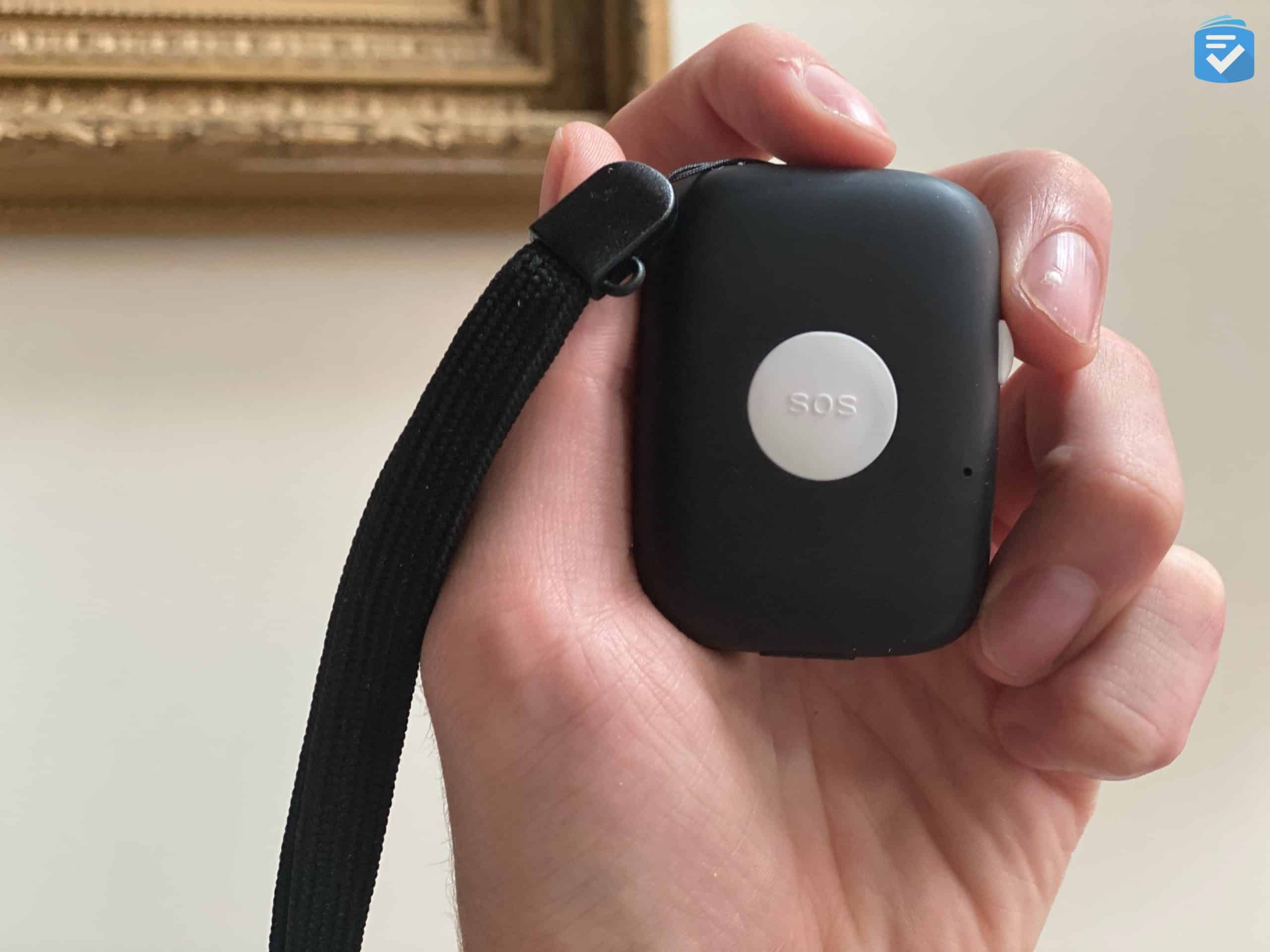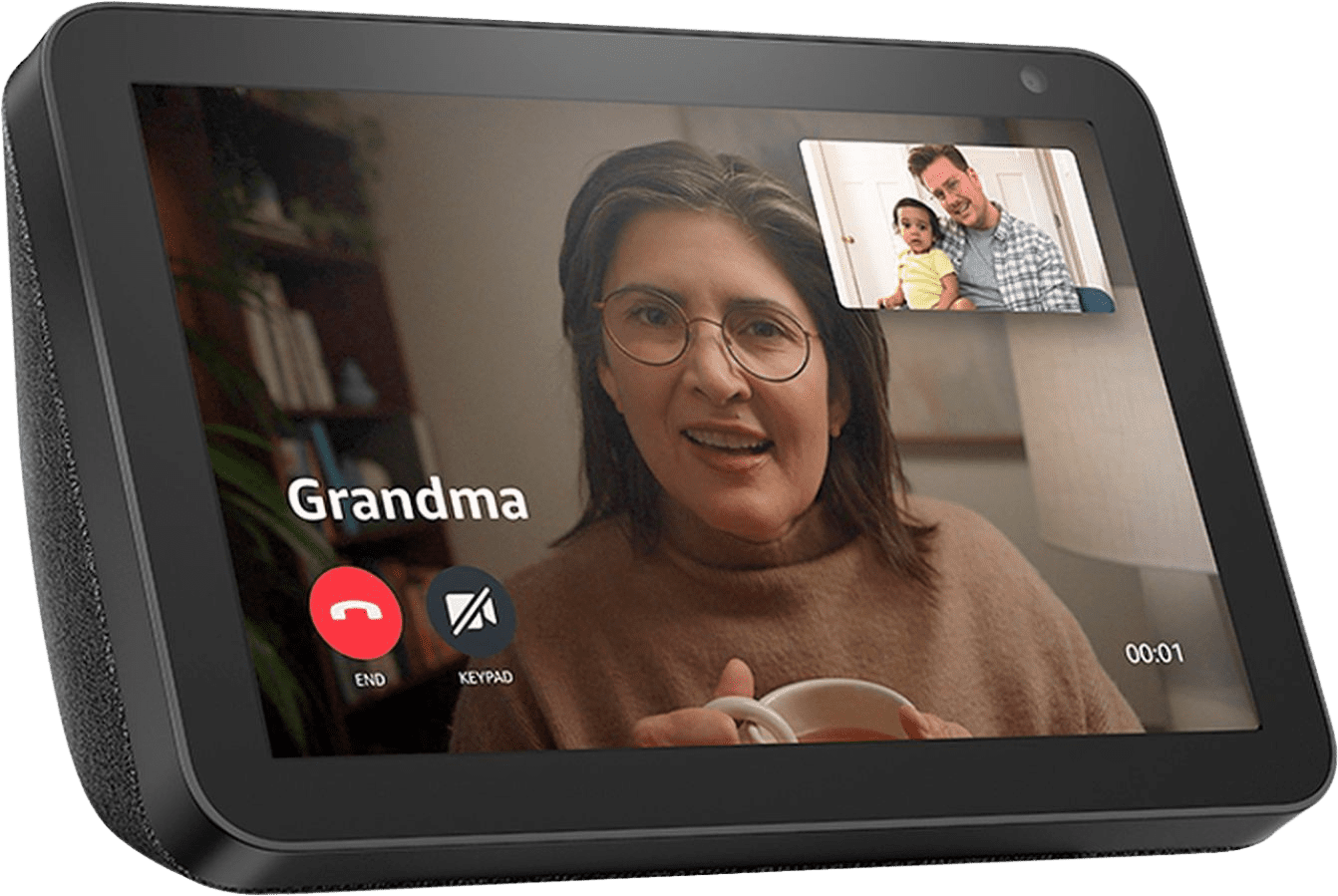Alexa for Seniors: Using Alexa to Age in Place

Like most new technologies, Amazon Alexa — a virtual assistant — was initially adopted by younger users; however, this technology has a wide range of uses for older adults. From entertainment features to practical assistance, Alexa can help seniors with a variety of tasks, and the best part is that most of its functions are entirely free, with no Amazon Prime subscription required.
How to Use Alexa
To use Alexa, you’ll want to purchase an Echo device from Amazon. While each of these devices differs slightly in cost, sound quality, and features, they’ll all give you the full range of features accessible through Alexa.
- Echo Dot: The smallest Echo device, the Echo Dot is roughly the size of a hockey puck, and it costs as low as $40.
- Echo: Slightly larger than the Dot, the spherical Echo features higher-quality sound, and it costs about $99.
- Echo Show: With its large screen and camera, the Echo Show can be used to watch videos and make video calls, as well as use Alexa. It costs about $85.
While Amazon offers additional Echo devices, we think these three are the most practical for seniors, and they’ll allow you to utilize any of the features mentioned below.
Once you’ve purchased and set up your Alexa-enabled device, you simply need to say Alexa, followed by any number of commands. Here are some of our favorites.
>> Related Reading: ElliQ AI Companion Robot Review
Create Grocery Lists
With Alexa, you can use your voice to create any type of list. In our experience, this feature is particularly helpful for grocery shopping. To use this feature, you can simply say, Alexa, add sugar and eggs to my shopping list. From there, Alexa will keep a list that you can ask to be recited. Alternatively, if you have a smartphone, the Alexa App can display this list for you. You can even order these groceries directly from Amazon.
Control Your Thermostat
If you have a smart home thermostat like an Ecobee or Google Nest, then you can pair your thermostat with Alexa to utilize voice controls.
For example, you might say:
- Alexa, turn up the thermostat.
- Alexa, adjust the temperature to 70 degrees.
Play Music and Audiobooks
If you have a Spotify account or subscription to Amazon music, then you can use Alexa to play your favorite songs. Similarly, you can use Alexa to play podcasts and audiobooks.
For example, you might say:
- Alexa, play disco music.
- Alexa, play The Beatles.
- Alexa, play Pride and Prejudice by Jane Austen.
Particularly with audiobooks, there is a wide range of public-domain titles, including books by Mark Twain and Jane Austen, that can be played for free.
Make Phone and Video Calls
With any Echo device, you can make phone calls directly to loved ones through Wi-Fi. To do this, you can say: Alexa, call Dad. Your Echo device will automatically pull the phone number from your contact list. If you have an Echo Show device, you can utilize its screen to make video calls in a similar fashion.
Set and Receive Medication Reminders
Medication errors account for thousands of injuries each year, making it important for those with multiple prescriptions to manage their medications. With Alexa, you can set reminders so that you’ll be reminded to take medications at the precise time you need them. You can even ask Alexa to remind you when a prescription is running low and use the virtual assistant to call your doctor to request a refill.
To set up medication reminders, you must enable the WebMD Med Reminders skill. Once you’ve signed up, you can say, Alexa, add reminder, to create a recurring medication reminder.
Did You Know? Alexa is not the only way to keep track of your medications. To learn more, read our rundown of the best medication dispensers.
Check on the Weather
With any Echo device, you can check on your local forecast by saying, Alexa, what’s the weather for today? In response, Alexa will read you your local forecast. You can also ask her for forecasts in the near future.
Set Timers
Though simple, one of our favorite Alexa features is the ability to set timers. At any point, you can say, Set a timer, and you’ll hear an alarm go off at the stated time, whether it’s in a few minutes or hours. This feature is especially handy when cooking.
Alexa Together: Connecting Caregivers and Loved Ones
While all of the features above are included at no cost — apart from the one-time purchase of an Echo device — Amazon offers a new subscription-based service, Alexa Together, that can help older adults living alone. Through a combination of medical alert system features as well as communicative tools for caregivers, Alexa Together is a great way to keep your loved ones safe in the home.
Currently, when you purchase an Echo Show, which is required to use Alexa Together, you’ll get a free six-month subscription to the service. After this period, Alexa Together will cost you $20 per month.

Customized Alerts
As we mentioned above, Alexa can be used to set a variety of alerts, reminders, and timers; however, with Alexa Together, caregivers can create alerts that sync up with their loved one’s Echo Show device. For example, a caregiver might use their smartphone to set a reminder of an upcoming doctor’s appointment. When the alarm is triggered, the user will receive a verbal notification from Alexa.
24/7 Urgent Response
With Alexa Together, when a user says, Alexa, call for help, their Echo Show will automatically trigger a call to an emergency monitoring center. Similar to a medical alert bracelet, the monitoring center will communicate with the user, assess the situation, and deploy the proper response, whether this means contacting first responders or a neighbor or loved one.
Additionally, Alexa will send a notification to the caregiver’s smartphone, informing them that an emergency call has been placed. This allows them to stay in the loop of their loved one’s well-being.
Activity Feed
In many cases, a caregiver might not need (or want) to be in constant contact with their aging loved one. That’s why we appreciate the activity feed feature of Alexa Together. With this feature, a user can log on to the app and see a chronological feed of their loved one’s activity with Alexa. For example, a caregiver might see that at 7 p.m. their father asked Alexa about the weather and at 11 a.m. he confirmed taking his medication.
The main draw of this feature is that, if a caregiver sees an extended period of time in which their loved one didn’t interact with Alexa, they can then place a drop-in call to see if everything is all right.
Circle of Support
Alexa Together’s Circle of Support allows up to 10 caregivers to connect to a device. Everyone in this circle can place drop-in calls, check the activity feed, and add reminders for the Echo device. Additionally, certain permissions can be granted, meaning some users could potentially be restricted.
Fall Detection
While you only need an Echo Show to use Alexa Together, you can purchase additional devices that enable fall detection. The SkyAngelCare fall detection pendant is worn around the user’s neck. In the event of a fall, the pendant will automatically trigger an emergency call through Alexa.
If you’re looking for a traditional medical alert system, then check out our rundown of this year’s best medical alert systems.

